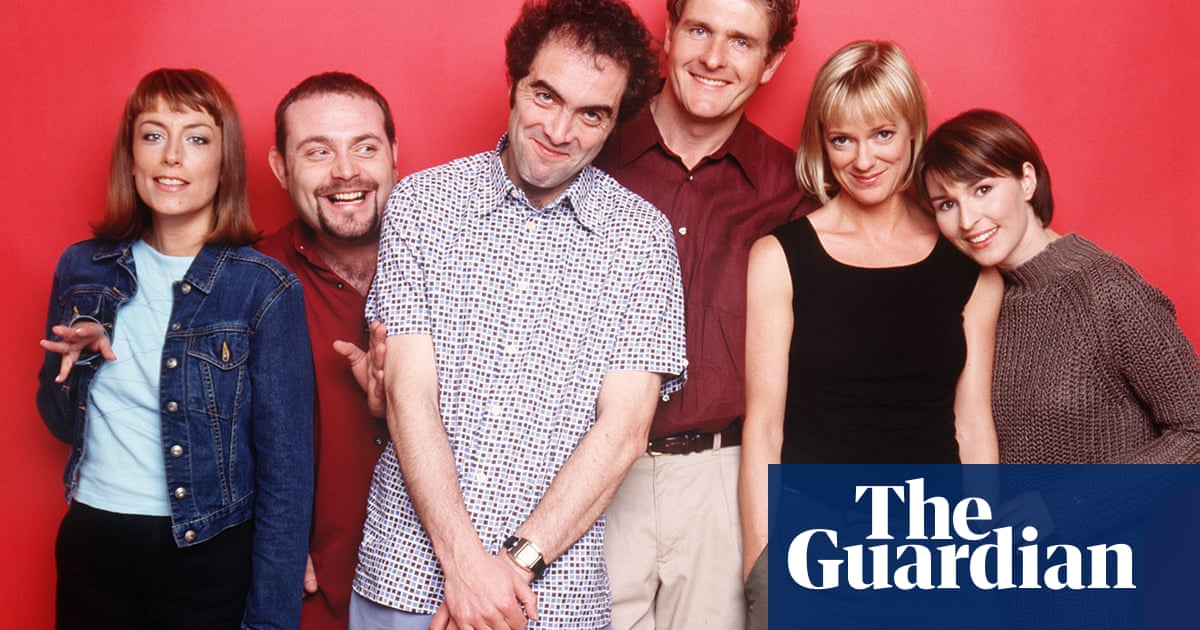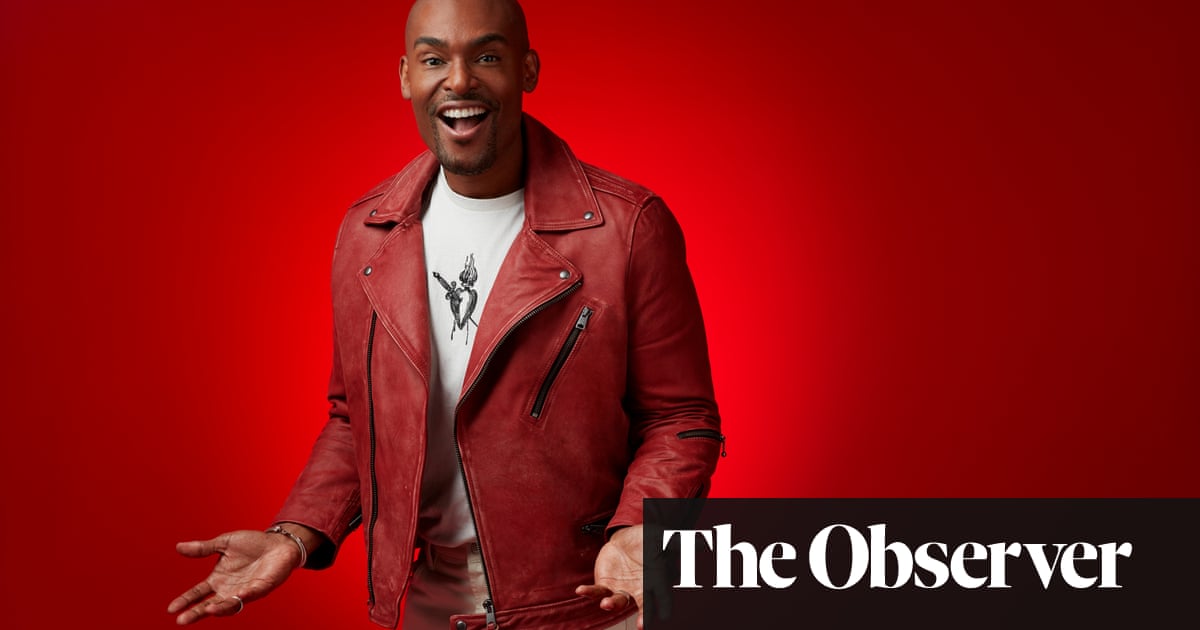
aul Smith’s first shop, which opened on Friday 9 October 1970 at 6 Byard Lane in Nottingham, wasn’t exactly a shop. “I realised I couldn’t afford a shop, but found a room and called it a shop,” the 74-year-old fashion designer says. There was damp on the walls and no windows; it was only open on Fridays and Saturdays and to reach it you had to snake down a corridor. It had a fancy name, Paul Smith Vêtements Pour Homme, but a modest selection: it sold clothes (made by other people back then) and some odd bits, such as magazines and records. On that first Friday – somehow, he’s not sure – Smith took £35. He chuckles, “How the heck it survived is absolutely amazing!”
The manager was an imposing blond named Homer: an Afghan hound belonging to Smith and Pauline Denyer, his then-girlfriend, now wife. “Homer was in charge and I worked with him,” Smith explains. “The interesting thing was that we looked exactly the same: big nose and long hair. And everybody talked to him first, of course, which I used to get a bit upset by. They’d all walk in and say, ‘Hi Homer!’ Then, ‘Oh, hello Paul.’”
A half-century on, Smith has grown – somehow, he’s not sure – that room in Nottingham into 166 stores in more than 60 countries on five continents. From £35 on that first day, the business had a turnover of £215m last year, which was 9% up on 2018. He is one of fashion’s true pioneers: in the 1980s, after a trip to the US, he put his spin on boxer shorts and sold them to the world; in the 1990s, he was one of the first designers to print photographs on to fabric. Along the way, with Giorgio Armani and others, he deconstructed the suit and made it something you might wear not just for work. Smith cannot claim to have invented stripes, but no person is more synonymous with that pattern. As the former Apple designer Jony Ive writes in a new Phaidon monograph, Paul Smith: “He celebrates colour as if it were about to be made illegal.”
Smith first went to Japan in 1982, when the country was scarcely a blip on fashion’s radar in the west, and more than 100 visits later he continues to enjoy astonishing success there, with more than 200 stores under licence. And, almost most impressively of all, the company that bears his name is still majority-owned by Smith himself. “So many of the brands around the world now are owned by just four companies maybe,” he says. “Independent companies are almost like a rare Penny Black stamp these days.”
Maybe because Smith is so unassuming, he is perhaps not immediately thought of as one of Britain’s great business-builders and entrepreneurs. Or it might have something to do with his office in London’s Covent Garden, where he is this afternoon surrounded by bicycles, priceless works of art and bizarre curios sent to him by fans. It’s been called “the paracetamol room” by staff because it is such a sensory overload that you always stumble out with a headache. Minimalist it ain’t. But with the brand turning 50, Smith has had to confront the inescapable truth that he is doing some things rather well.
“More recently, you’ve had to take the whole thing seriously obviously, because you’ve got 1,800 staff or something,” he says. “But in the early days, I was a shop assistant for six years before I met Pauline. Then we thought we’d open a little shop and we only opened it two days a week and the rest of the week I was doing other jobs that came along just to earn money. It’s always been so honest and lovely, and I think that’s probably why it’s done all right, because it’s got really solid foundations.”
So what are Smith’s plans for the 50th birthday? “I’m going to really let my hair down and get drunk in a pub,” he replies, sotto voce. A big bash with five friends? “Yeah, well, obviously it’s a bit sad it’s in this year, but I’ll probably have a nice little quiet dinner with my missus, who was the instigator of the business in the first place anyway.”
Part of the fun of the anniversary for Smith has been trawling through the archives and reminiscing on how it all began. Homer’s flowing locks featured prominently in the campaign for the spring/summer 2020 collection in the form of a photograph taken by Smith’s father, Harold, that was a backdrop for the models. It’s also been a reminder to Smith of how much of the Paul Smith ethos was there from the outset. Today, his shops might have a room with 26,000 dominoes glued to the wall (London’s Mayfair) or covered in hundreds of old mobile phones (Paris) or cassette tapes (Tokyo), but even starting out, Smith was determined to turn shopping for clothes into an experience. When he learned the building on Byard Lane that housed his first shop had a poky basement, he white-washed the walls and turned it into an art gallery (of sorts). With the help of a friend in the art world, he was soon holding exhibitions of work by David Hockney, David Bailey and Andy Warhol.
“Since I was 15 I’ve basically been working in shops, serving people,” says Smith. “And you get to know about shops, especially in a provincial town, that you get the same customer coming back in. So you’re always trying to make the shop look different, and think about how to make their visit worthwhile, even though they’d only been in three weeks ago. So I think it’s not really being entrepreneurial, but it’s working out how to always be interesting and make people feel welcome.”
Smith adores shops: “I’m a merchant!” he often says. But it’s a strange time to be having this conversation, when Covid-19 has made retail, and especially fashion, one of the most precarious businesses out there. Smith has been around long enough to have lived and worked through the Three-Day Week of 1974, when he had to use Christmas fairy lights on a generator in the shop, and the miners’ strike in the early 1980s, which eviscerated the area around Nottingham. He’s survived more financial downturns than he can remember. But the new crisis is different, more global, fewer chinks of hope. “This is by far the worst,” Smith concludes.
Smith doesn’t want to talk politics today, but he has previously noted that he hates how divided society is at the moment. “So much of that is because populist leaders say things people want to hear,” he has said, pointing no fingers. Discussing Brexit with Vogue last year, he said: “I was as surprised as anybody on the result of the referendum, but without question, I am loyal to Europe,” and reiterated the fact that, as an “independent company, we’re flexible enough to weather the storm”.
During (the first) lockdown, Smith spent most days in the office, pretty much alone in a space meant for 200 people, doing what he could to keep plates spinning around the world. “Paris is really, really dead,” he says. “New York, nobody’s daring to go out. Los Angeles the same. If you think about the USA, you’ve got an election, you’ve got fires, you’ve got protests in some cities and then you’ve got the virus. Talk about everything against you! Anybody who says they’ve not been affected is not really telling the truth –unless you’re PowWowNow, one of those people that have actually probably made money out of the whole thing.”
So: challenging conditions, maybe the toughest in the long history of Paul Smith. But Smith himself doesn’t really do pessimism; he worked out long ago that people come to him and his brand to be cheered up. “You might run out of cash, who knows?” he says. “But luckily, so far we’re very solid.”
Paul Smith’s 2020 actually started off rather well. At his autumn/winter show in Paris in January, critics were impressed as he mixed modern, slim-silhouette tailoring in checks and houndstooth with nods to the archive and photoprints, such as a plate of wax spaghetti he bought in Japan in the 1980s that was emblazoned on everything from hoodies to hats. In the front row Sir Ian McKellen, Susan Sarandon, Bill Nighy, Niall Horan and Jon Hamm were squeezed in. “We had a nice crowd of people there and dinner afterwards,” says Smith, “and so many people have said to me since, ‘Oh, gosh, Paul, that was the last time we really had fun!’”
Several of the photoprints feature on a new Paul Smith capsule collection for men and women. He first used the wax spaghetti on designs back in 1994, and he likes it because it mixes high and low, good taste and bad, Salvador Dalí and a cheap Tokyo restaurant. “I’ve always enjoyed that balance of kitsch and beautiful, tongue in cheek,” Smith explains. Another series of bold floral prints was inspired by seed packets he bought in Suttons gardening shop while wandering around Covent Garden.
Nowadays, Smith finds that his main role in the business is to supply inspiration to a team of young designers he has collected around him. Sometimes it’s just bringing in a Dieter Rams-era Braun radio and announcing, “This is a pair of shoes!” “I always say to them, ‘I’m just going to throw lots of ideas out and some you will think are silly or not relevant, but it’s my job to throw out ideas, think laterally, maybe bring a book out or a funny hat or toy or a painting or whatever it is.’ That starts conversations and before you know where you are, after about an hour, you’ve got the thin thread of a new collection, which is so nice.”
Smith is in many ways ageless, but he does hold out against technology. “I have a notebook and a pen,” he says, with a dry laugh. “We have no computer at home, no answer machine. Pauline writes letters, I write letters every morning, at 6am when I get in here, to people.” He clarifies that this doesn’t apply to Paul Smith the brand: the business has sold through the internet since 2004 and he’s well aware that its survival depends on e-commerce. “So as a company, we’re very savvy, but as an individual, I don’t like cluttering my head by sitting in front of a screen all day. I don’t think it’s what I want to do.”
As to what happens next, Smith is no clearer than the rest of us. But he will continue doing what he does: waking up before 5am, going for a swim to ease his back pains, at his desk by 6am. He then works all day, finishing around 5pm, back in his Mini Cooper and often dropping in on one of his London shops on the way home. He rarely goes out in the evenings, which might seem strange for someone so at ease with people, but Smith has never had his head turned by “the glitzy, superficial side of the fashion business”. It’s something else he gives credit to Denyer for.
“I’m lucky that I’ve been with Pauline since I was 21, so I’ve never been searching for any other lifestyle,” he says. “We still love each other, we’re still together, we really enjoy each other’s company, we’ve never aspired to like yachts or private jets. We’ve done well, we’ve got a nice house in Italy, we’ve got a nice house in London. We’re independent.”
Denyer had two children when she and Smith met, but they didn’t have any together. One of Denyer’s sons worked at Paul Smith, but left to concentrate on acting. Smith knows that people are curious about succession and how long he will stay on, but for now he insists it’s not a pressing issue. “If I’ve got my health and I’m not causing a problem here because I’m out of date, then I enjoy coming in,” he says. “Eventually, I have no idea what will happen. If it gets sold, there’s a good team here that can carry on the legacy in the way I would like it.”
Smith has to move on to his next appointment. Though his company may be facing a daunting, even existential threat, he is approaching it, as he always seems to do, with humour and a Python-esque sense of the absurd. “I’m still blessed with enjoying every day,” he says. “Sounds a bit clichéd, doesn’t it? But I do. I keep thinking I’ll walk outside and a very large double-decker bus will fall on my head from the sky or something. But so far it hasn’t.”
Paul Smith 50th anniversary capsule collection is available at paulsmith.com












